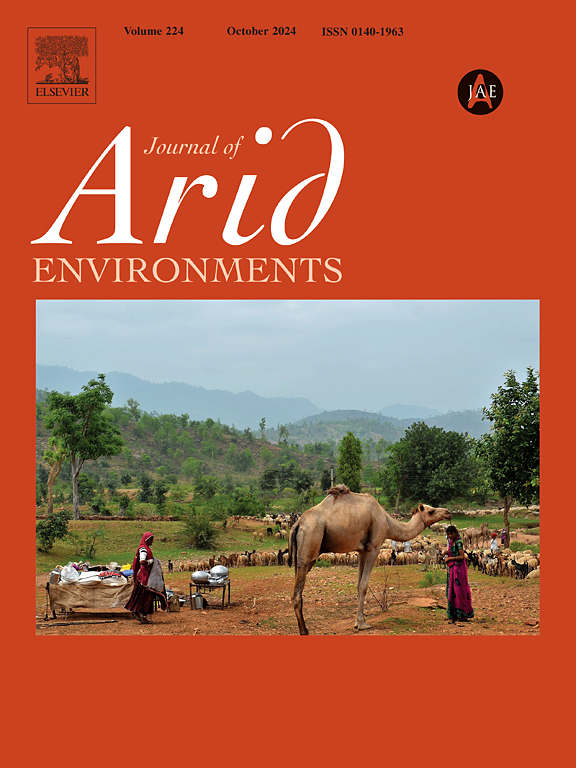Ant community recovery in regenerating Caatinga dry forest following slash-and-burn agriculture
IF 2.6
3区 环境科学与生态学
Q2 ECOLOGY
引用次数: 0
Abstract
The conversion of old-growth forests to agricultural fields, followed by abandonment, has resulted in worldwide expansion of secondary forests. Secondary succession can bring back many organisms, restoring ecosystem functions and services, but studies often focus on the recovery of plant rather than animal communities. Here, we investigate whether ground and arboreal ant species and functional groups recover during secondary succession in the Caatinga dry forest. We adopted a space-for-time chronosequence approach with 10 regenerating forest stands following slash-and-burn agriculture (8–54 years old) and five old-growth forest stands (no record of agriculture for over 100 years). We recorded 71 ant species (59 ground species, 27 arboreal, and 15 in both strata) belonging to 26 genera and six subfamilies. We found no significant differences in both taxonomic and functional diversities between regenerating and old-growth forest stands, considering the whole community and ground and arboreal ants separately. However, increases in plant biomass were positively related to taxonomic and functional diversities of ground ants, while arboreal ants remained unaltered across the entire biomass gradient. Species and functional group compositions did not differ between forest type. Nevertheless, increased similarity in plant biomass between regenerating and old-growth forests was positively related to species similarity for the whole ant community and ground ants, while arboreal ant species composition remained unresponsive. These findings suggest that either ant communities are not significantly altered by slash-and-burn agricultural practices or they recover quickly during secondary succession. Given that previous studies have documented the loss of ant species and functional groups due to increasing disturbance, it is reasonable to expect that these communities recover quickly as secondary succession progresses.

刀耕火种后卡廷加干旱林再生中的蚂蚁群落恢复
将原生林转变为农田,然后放弃,导致世界范围内次生林的扩大。次生演替可以恢复许多生物,恢复生态系统的功能和服务,但研究往往侧重于植物群落而不是动物群落的恢复。本文研究了在卡廷加干旱林次生演替过程中,地面蚁和树栖蚁的种类和功能群是否恢复。我们采用了时空时间序列方法,选取了10个刀耕火种农业(8-54年)的再生林分和5个原生林(100年以上没有农业记录)。共记录到蚂蚁71种,其中陆生59种,树栖27种,两层各15种,隶属于6亚科26属。从群落整体、地面蚁和树栖蚁两方面考虑,更新林与原生林的分类多样性和功能多样性均无显著差异。然而,植物生物量的增加与地面蚂蚁的分类和功能多样性呈正相关,而树栖蚂蚁在整个生物量梯度上保持不变。不同林型的树种和功能群组成没有差异。再生林与原生林之间植物生物量相似性的增加与整个蚂蚁群落和地蚁的物种相似性呈正相关,而树蚁物种组成没有响应。这些发现表明,要么是刀耕火种的农业做法没有显著改变蚂蚁群落,要么是它们在次生演替中迅速恢复。鉴于先前的研究已经记录了由于干扰增加而导致的蚂蚁物种和功能群的损失,我们有理由期望这些群落随着二次演替的进行而迅速恢复。
本文章由计算机程序翻译,如有差异,请以英文原文为准。
求助全文
约1分钟内获得全文
求助全文
来源期刊

Journal of Arid Environments
环境科学-环境科学
CiteScore
5.70
自引率
3.70%
发文量
144
审稿时长
55 days
期刊介绍:
The Journal of Arid Environments is an international journal publishing original scientific and technical research articles on physical, biological and cultural aspects of arid, semi-arid, and desert environments. As a forum of multi-disciplinary and interdisciplinary dialogue it addresses research on all aspects of arid environments and their past, present and future use.
 求助内容:
求助内容: 应助结果提醒方式:
应助结果提醒方式:


